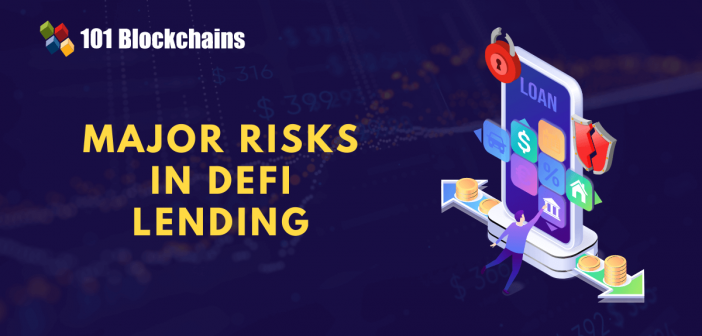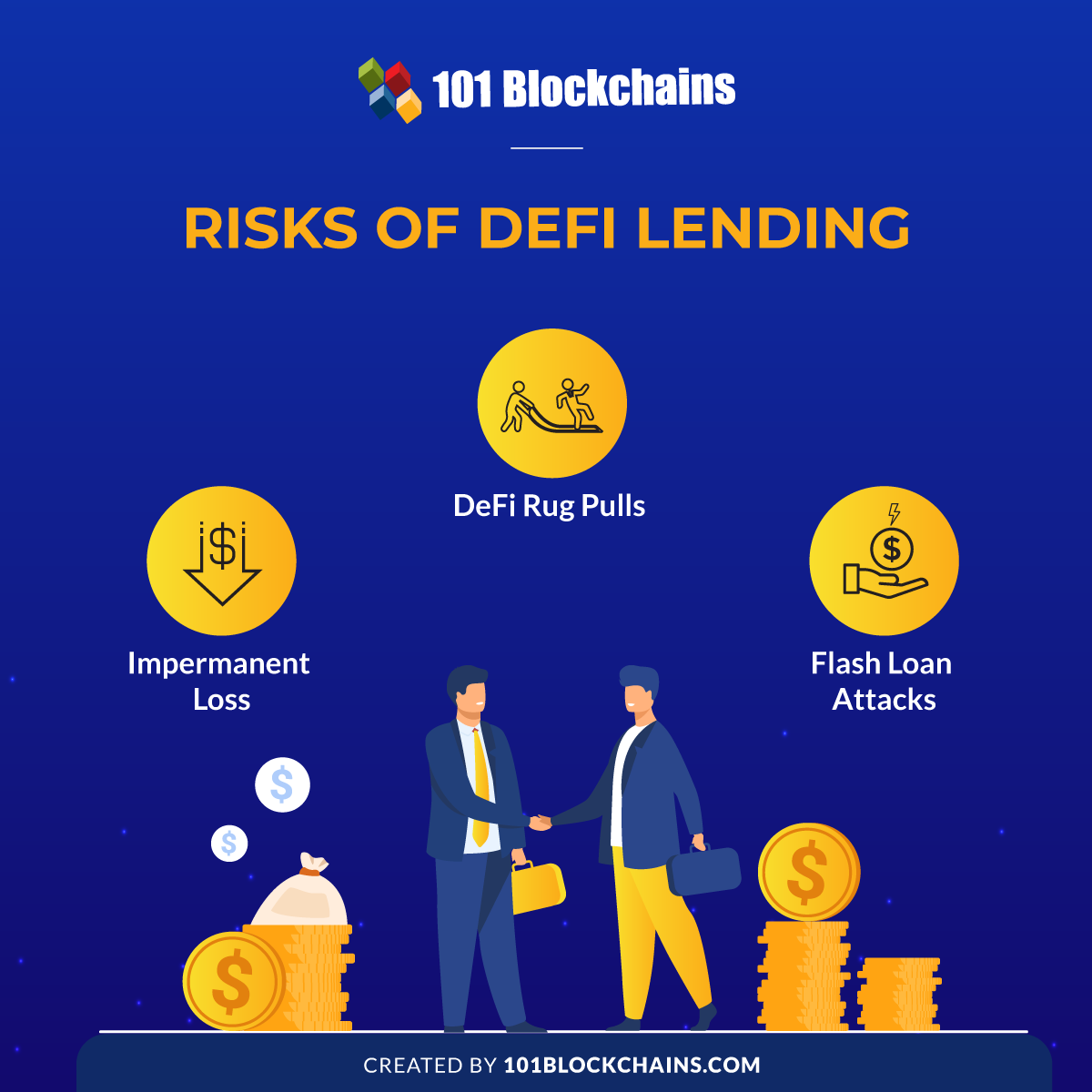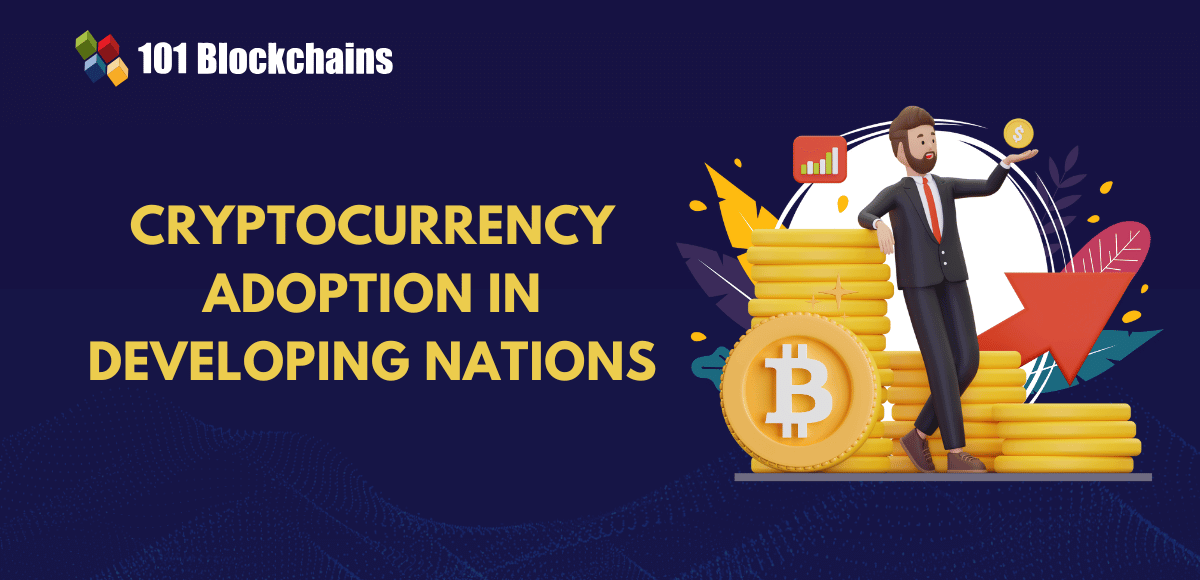Learn how blockchain truly works, master key definitions, and uncover what makes smart contracts so "smart." Dive into the fundamentals, gain valuable insights, and start your blockchain journey today!

- Cryptocurrency
Georgia Weston
- on December 15, 2021
3 Major DeFi Lending Risks That You Should Know
DeFi lending has gained so much attention in recent times but some risks are associated with DeFi that you need to know. Dive in to learn more!
The term “DeFi” has become quite commonplace in the crypto landscape as new DeFi protocols garner attention from investors worldwide. Decentralized finance gained momentum in the years 2020 and 2021 has been quite a promising year for the sector. After a slump of 35% following an impressive growth run between January and May, DeFi registered an impressive 335% year-over-year growth in September 2021.
With so many financial services being transformed by DeFi, the scope of DeFi lending and borrowing has gained the most attention. Therefore, investors are worried about DeFi lending risks and how they would affect DeFi in the long run. The following discussion helps you find a detailed impression of the different risks associated with DeFi lending and borrowing solutions.
Want to know what is the scope and purpose of DeFi? Enroll Now: Introduction to DeFi – Decentralized Finance Course
Is DeFi Lending Popular?
As of June 2021, DeFi lending and borrowing protocols accounted for almost 18% share in the overall DeFi market in terms of capitalization. So, it is quite evident how DeFi lending is actually driving awareness about the concept of decentralized finance. Now, people look for risks in DeFi lending as it promises some unbelievably high rates of return. DeFi offers an ecosystem of financial services which are the same as the ones provided by insurance brokers, financial intermediaries, and traditional banks.
However, DeFi has a unique twist! There are no intermediaries, brokers, or third parties for helping you access financial services such as loans. DeFi leverages decentralized applications or dApps, which run on the basis of smart contracts autonomously. Smart contracts are special computer programs that execute specific functions upon compliance with certain predefined conditions.
Therefore, you can clearly notice the prospects for exceptional growth of DeFi lending in the future. As a result, the focus on “what are the risks of DeFi lending” is clearly valid as DeFi lending is also a notable DeFi service. Decentralized apps have been able to transform crypto lending by improving its accessibility to a broader user base.
Crypto investors could now use DeFi lending for locking up their funds just like a savings bank account. Investors could also use their crypto assets to offer liquidity throughout a wide range of DeFi platforms. In return for locking their assets on the platform, investors would receive rewards and regular interest payments. On top of it, the interest rates on new DeFi lending platforms can easily surpass the rates in traditional finance by huge margins.
Want to explore in-depth about DeFi protocol and its use cases? Enroll in Decentralized Finance (Defi) Course- Intermediate Level Now!
Risks of DeFi Lending

Please include attribution to 101blockchains.com with this graphic. <a href='https://101blockchains.com/blockchain-infographics/'> <img src='https://101blockchains.com/wp-content/uploads/2021/12/Risks-of-DeFi-Lending.png' alt='Risks of DeFi Lending='0' /> </a>
One can clearly assume that DeFi lending offers a reliable approach for crypto holders to earn passive income. However, it is also important to take note of the prominent DeFi lending threats before you dive into DeFi lending. You could find three prominent risks associated with DeFi lending, which play a huge role in shaping the DeFi ecosystem. The three notable DeFi lending risks include impermanent loss, DeFi rug pull schemes, and flash loan attacks. Let us shed more light on the risks you have to take into account before taking part in DeFi lending.
-
Impermanent Loss
Impermanent loss is one of the common answers to questions like “What are the risks of lending on DeFi?” for obvious reasons. The volatile nature of crypto tokens is the primary reason behind impermanent loss. Investors have to lock their assets in liquidity pools for DeFi lending, and the change in price of the assets after depositing them in the pool creates an impermanent loss. You need to understand the fundamentals of liquidity pools in DeFi for gaining in-depth insights on DeFi risks like an impermanent loss.
The impermanent loss risk depends profoundly on the Automated Market Maker system used in popular DeFi liquidity pools. The DeFi pools have to maintain a ratio of assets in the pool at a specific ratio with two tokens. For example, a liquidity pool could have ETH and LINK tokens by fixing the ratio of the pool at 1:50. Therefore, any person who wants to offer liquidity to the pool should deposit ETH as well as LINK in the pool in the same ratio.
The DeFi lending threats of impermanent loss also emerge from the fact that DeFi pools depend considerably on arbitrage traders for aligning the prices of tokens in the pool with existing market value. They can add tokens of higher value in the pool upon changes in value of tokens in the pool. So, if the value of LINK drops, arbitrage traders would add ETH to the pool for removing LINK.
However, the ratio of coins changes when arbitrage traders add only one token in excess for removing the discounted token. So, the liquidity pool would automatically increase the price of the token in high supply, i.e., LINK, and reduce the price of ETH. As a result, it can encourage arbitrage traders to rebalance the pool.
You would face the DeFi risks of impermanent loss after the pool has been rebalanced. The increased value of the liquidity pool is generally lesser than the value of the assets in the lending protocol. The difference would provide you with a quantified impression of impermanent loss.
You might have identified how impermanent loss is one of the prominent risks in DeFi lending. However, impermanent loss should not hold you back from realizing the full potential of DeFi lending. As a matter of fact, DeFi lending protocols also facilitate liquidity providers with a share of trading fees on the pool according to their stake.
The additional rewards can help in offsetting the impact of impermanent losses. You can also address the DeFi lending risks of impermanent loss by choosing liquidity pools that have assets with limited volatility. It is important to think of impermanent loss as a calculated risk rather than a barrier to the DeFi space.
Want to explore an in-depth understanding of security threats in DeFi projects? Enroll In DeFi Security Fundamentals Course Now!
-
DeFi Rug Pulls
Imagine standing on a rug with all the trust in the world, and someone pulls it off from under you with sudden force. Defi rug pulls one of the notable answers to “what are the risks of DeFi lending” and has been a major highlight in the DeFi space recently. Even if DeFi looks quite promising, there is no clear set of regulations for the ecosystem. Therefore, investors have to place a certain level of trust in the platforms on which they are willing to lend their assets or purchase tokens. However, investors could fall prey to breaches of such trust in the shape of rug pull schemes.
DeFi rug pulls devious DeFi lending threats, which are basically a new type of exit scam in decentralized finance. In such scams, DeFi developers create a new token and pair it with leading cryptocurrencies like ETH for creating liquidity pools. The developers would then promote the new token and encourage people to deposit it in the pool.
After collecting a substantial amount of the leading cryptocurrency, i.e., ETH, in the pool, the DeFi developers use back doors. The back doors coded intentionally into the token’s smart contract help in minting millions of new coins. Developers could sell the new coins for ETH and empty the pool of ETH, thereby leaving only the worthless tokens. The developers would then disappear without leaving any traces.
One of the famed examples of rug pull risks in DeFi lending garnered highlights in 2020. Chef Nomi, the founder of SushiSwap, liquidated his SUSHI tokens after collecting more than a billion dollars as collateral. The event pushed the value of Uniswap’s competitor token to almost zero. It is easily one of the most dramatic moments in the history of DeFi, drawing attention to DeFi risks. In a billion-dollar industry, DeFi rug pulls, and exit scams account for almost 99% of all blockchain-related fraud activities.
Want to understand the best ways to use DeFi development tools like Solidity, React, and Hardhat? Enroll now in DeFi Development Course!
-
Flash Loan Attacks
The final entry among answers to “What are the risks of lending on DeFi?” would point towards flash loans. Flash loans are basically a new type of loan in the DeFi space which do not require any collateral. You could find two distinct types of loans in the conventional banking space as unsecured and secured loans.
Unsecured loans generally involve smaller amounts of money and do not require any collateral. On the other hand, secured loans are larger and would need specific collateral such as investment, property, car, or any other asset. Banks can evaluate the credibility of clients by using tools such as credit scores and reports in the entire loan process.
Flash loans are a significant entry in DeFi lending risks as a distinct variety of unsecured loans based on smart contracts. Flash loans use smart contracts for resolving all the risks associated with unsecured loans in traditional banking. However, flash loans come with a specific detail that shows how unique they are. Borrowers must repay the full amount borrowed in flash loans back in the same transaction. If the borrower fails to pay back the loan, the lender can just roll back the transaction.
However, flash loans can present a formidable risk in DeFi lending as malicious actors could use them for market manipulation. Some agents could also use flash loans for exploiting the vulnerable DeFi lending protocols for personal interests.
Join the Standard & Premium Plans now to watch our on-demand webinar on DeFi And The Future Of Finance
Bottom Line
The growth of decentralized finance would obviously lead to a rising number of DeFi lending risks, and there’s no surprise. You have an impermanent loss due to volatility of crypto assets, and rug pulls due to malicious DeFi developers. In addition, you can also witness new, innovative DeFi solutions like flash loans being modified as threats in DeFi.
A clear understanding of the three important risks in DeFi lending shows a clear impression of possible direction of DeFi in the future. In addition, the identification of risks for DeFi lending would also support improvement of existing practices. Learn more about the risks associated with DeFi lending and discover new opportunities for tapping the potential of DeFi now.
*Disclaimer: The article should not be taken as, and is not intended to provide any investment advice. Claims made in this article do not constitute investment advice and should not be taken as such. 101 Blockchains shall not be responsible for any loss sustained by any person who relies on this article. Do your own research!





